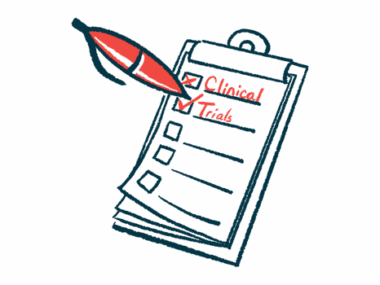Unlocking the benefits of AAC early for your child with Angelman
Understanding augmentative and alternative communication is vital
Written by |

Communication is one of the skills I am most grateful for when I think about how my 13-year-old Angel, Juliana, is growing and changing. The other day, I thought about how far she has come since she was first introduced to the iPad.
Our device was gifted by the Angelman Syndrome Foundation a few years ago. However, other organizations also give tablets to those who need an augmentative and alternative communication device, or AAC.
In Angelman syndrome, a genetic disorder that affects the nervous system, children often are able to understand language spoken to them to a greater extent than they are themselves able to speak.
As part of AAC Awareness Month in October, the nonprofit organization Apraxia Kids is accepting applications through Nov. 6 for its Tablets for Apraxia program. When starting AAC with my Angel, getting the device was the easy part. The next step was researching, selecting, and implementing the software. Moving from researching to actually taking action was the challenge.
Start simple
Perhaps the most difficult task about having my Angel begin formal communication was knowing what to do. Even with the right resources, getting started can be overwhelming.
For those under the age of 3, outside supportive services like state intervention programs can help. In the state of Georgia, our intervention program is called Babies Can’t Wait. The program’s trained therapists work to evaluate infants and toddlers to determine eligibility and need for services.
For children older than 3 and enrolled in pre-K, the teacher will hopefully have in-class methods to begin communication. These might include:
- Picture cards
- Manual talkers
- Simple sign language.
Even if a program is used at school, that doesn’t mean it is right for use at home. Before Juliana began pre-K, she worked with an in-home therapist who started using an iPad with her at 3 years old. When Juliana started early intervention pre-K, she used a manual talker at school, but we continued to practice on the iPad at home.
A lot of progress has been made since that early start, but it didn’t happen overnight. I’m thankful that I’ve let myself off the hook from feeling pressure to make the process perfect.
Still finding my way
I’m traveling my own winding path with AAC, and as Juliana progresses, the route to proficiency is tweaked as needed. A good example of this is last year, when I changed the software on her personal talker. This wasn’t an action prompted by the school. Rather, when I saw a deficit with her previous software, I simply changed it.
Instead of an all-or-nothing approach, our communication efforts run in tandem with what Juliana practices at school. This is not confusing or contradictory in any way. I’ve taken this approach because the school guidelines and software have changed many times in the 10 years that Juliana has been a student.
Eventually, I realized that the school district has its goals and we have ours. My goal is that by the time Juliana graduates, she can effectively use her talker independently. Because she learns through repetition, it requires years of practice on a similar device with the same or similar software. Continuous changes will only deter her from making progress. By continuing her practice and device use at home, I believe I’ve found a way to counter that.
There is no one-size-fits-all or easy way for a child with Angelman syndrome to learn to communicate. However, it is impossible to use AAC efficiently without practice.
There isn’t much I would change about how we began communication work with Juliana. I think our quest is unfolding as it is supposed to. And while the idea of starting a new task can be daunting, like many tasks I’ve taken on as a special needs parent, I simply start, and then make it up as I go.
Note: Angelman Syndrome News is strictly a news and information website about the disease. It does not provide medical advice, diagnosis, or treatment. This content is not intended to be a substitute for professional medical advice, diagnosis, or treatment. Always seek the advice of your physician or other qualified health provider with any questions you may have regarding a medical condition. Never disregard professional medical advice or delay in seeking it because of something you have read on this website. The opinions expressed in this column are not those of Angelman Syndrome News or its parent company, Bionews, and are intended to spark discussion about issues pertaining to Angelman syndrome.







Leave a comment
Fill in the required fields to post. Your email address will not be published.